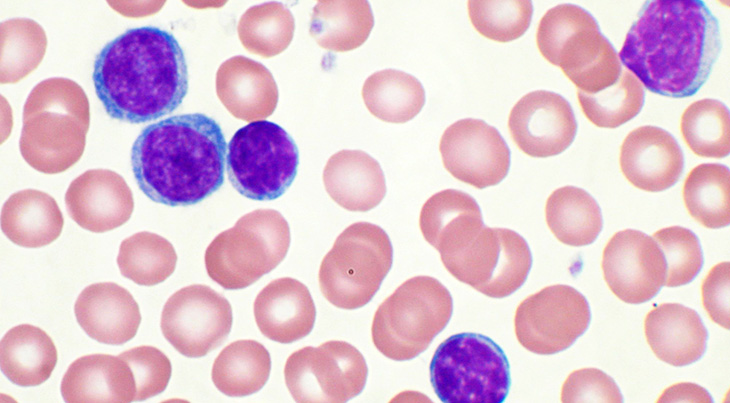Chronic Lymphocytic Leukemia: Symptoms and Risk Factors
September is Blood Cancer Awareness Month
There are several different types of cancers that affect blood and bone marrow. In the leukemia group of blood cancers, there are several sub-types of leukemia which typically affect adults more often than children. The American Cancer Society says that chronic lymphocytic leukemia (CLL) is most often found in older adults and senior citizens (people older than age 55-60); with 71 being the average age of diagnosis.
 (CLL / Chronic Lymphocytic Leukemia Photo: VashiDonsk at the English Wikipedia)
(CLL / Chronic Lymphocytic Leukemia Photo: VashiDonsk at the English Wikipedia)
What is Chronic Lymphocytic Leukemia?
With CLL, a genetic mutation in the DNA of blood-producing cells causes abnormal white blood cells (lymphocytes) to be produced. Lymphocytes usually help the body to fight infection, but with this mutation the body’s ability to fight infection (our immune system) is negatively impacted. Approximately 60-70% of people with chronic lymphocytic leukemia are men. (CLL) typically progresses more slowly than other types of leukemia,, although the sub-type B-cell prolymphocytic leukemia is a more aggressive sub-type of CLL. Although incurable, there are effective treatments for chronic lymphocytic leukemia.
Early Symptoms of Chronic Lymphocytic Leukemia
Early symptoms may or may not occur with CLL, but if they do, they may include:
- Enlarged lymph nodes
- Fatigue
- Fever
- Pain in upper left abdomen, from an enlarged spleen
- Night sweats
- Weight loss
- Frequent infections
Risk Factors for Chronic Lymphocytic Leukemia
- Older Age – In America, the average age when chronic lymphocytic leukemia is usually diagnosed is age 71 (usually adults age 55-60+). CLL rarely occurs in children or adults under the age of 40.
- Family history/genetics – A family history of chronic lymphocytic leukemia or other blood and bone marrow cancers increases your risk.
- Ethnicity – Caucasian/white people with a European with a Celtic or Jewish heritage may be at higher risk of developing CLL than people from other cultural backgrounds.
- Overweight/obesity – some studies have shown that overweight people are at higher risk of developing leukemia than people with a normal bodyweight.
- Chemical exposure – Some insecticides and herbicides (Agent Orange, benzene) are linked to an increased risk of CLL.
Prevention of Chronic Lymphocytic Leukemia
Maintaining a healthy body weight through exercise and a healthy diet can help to decrease the risk factor of developing CLL. Studies have shown that a diet rich in fruits and vegetables has been a key factor in the reduction of cancer risk. According to Eating Well, Living Well (2009) by Dr. Richard Béliveau and Dr. Denis Gingras, consuming red wine, green tea, fruits, vegetables, dark chocolate and avocado can help to prevent the development and progression of cancer.
Chronic Lymphocytic Leukemia Resources:
Eating Well, Living Well (2009) by Dr. Richard Béliveau and Dr. Denis Gingras
**This article is for informational purposes only and is not intended as expert nutrition advice, nor is it a substitute for professional medical or nutritionist advice, diagnosis, or treatment. Always seek the advice of a qualified physician or nutrition expert with any questions you may have regarding a medical or other health condition. In the event of a medical emergency, call a doctor or 911 immediately. This website does not recommend or endorse any specific tests, physicians, products, procedures, opinions, or other information that may be mentioned on the Site or on other websites it links to. Reliance on any information provided by this website or other websites it links to, is solely at your own risk..**
